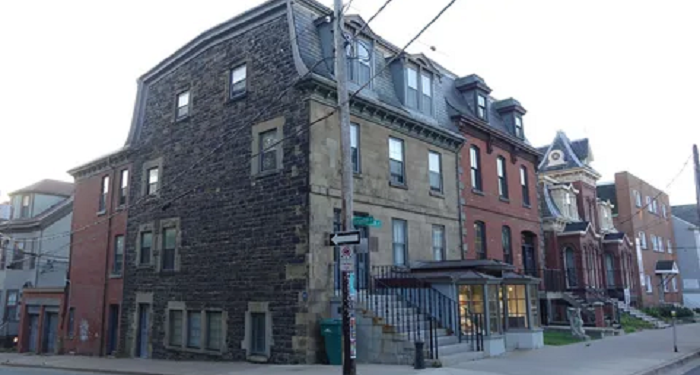Renovating a historic property in London can be both a rewarding and challenging process. With careful planning and attention to detail, homeowners can maximize the value of their property while preserving its unique historical features.
From restoring original architectural elements to updating modern amenities, there are numerous ways to enhance the appeal and functionality of a historic home while maintaining its character and charm. For example, adding energy-efficient appliances and insulation can help reduce utility costs and improve the property’s overall sustainability, while refinishing original hardwood floors or exposed brick walls can enhance the property’s aesthetic appeal and increase its market value. In this article, we will explore some practical tips and strategies for renovating historic properties in London to maximize their value and appeal to potential buyers. By highlighting the unique architectural features and historical significance of the property, homeowners can create a sense of nostalgia and authenticity that can attract buyers seeking a piece of London’s rich history. Whether it’s updating the kitchen with modern fixtures and appliances or restoring original stained glass windows, there are countless ways to breathe new life into a historic property while preserving its historical integrity. By approaching the renovation process with creativity, patience, and a respect for the property’s heritage, homeowners can transform their historic home into a true gem that stands out in London’s competitive real estate market.
Understanding the Importance of Preservation
Understanding the importance of preservation is key when renovating historic properties in London. This means respecting the original architecture and unique features of the building, while also ensuring that any changes made are in line with its historical significance. For example, if you have a beautiful Victorian townhouse, you may want to consider restoring the intricate cornices and moldings rather than replacing them with something more modern. By preserving these details, you not only maintain the character of the property but also increase its value in the long run. Preservation also involves being mindful of the materials used during renovation. Opting for high-quality, durable materials that are in keeping with the era of the property can help maintain its authenticity and ensure that it stands the test of time. For instance, if you’re renovating a Georgian-era property, using traditional materials like lime plaster or reclaimed timber can help preserve its historical charm. By prioritizing preservation in your renovation project, you can create a space that not only honors the past but also adds value to your property in the competitive London real estate market.
Researching Historical Regulations and Guidelines
When renovating historic properties in London, it’s crucial to research the regulations and guidelines that govern them. These guidelines are in place to preserve the historical integrity of the properties and ensure that any renovations are done in a way that maintains their value. For example, the Conservation Areas in London have strict regulations on what can and cannot be changed on historic properties. By researching these regulations beforehand, you can save yourself time and money by avoiding costly mistakes that may not be in compliance with the guidelines. Another important aspect of researching historical regulations and guidelines is understanding the requirements for listed buildings in London. Listed buildings are protected by law due to their historical or architectural significance, and any renovations must adhere to strict guidelines. For example, if you are renovating a Grade I listed building, you may need to obtain special permissions for any alterations to the property. By researching these regulations and guidelines before starting a renovation project, you can ensure that your renovations are in compliance and maximize the value of the historic property.
Maximizing Space and Layout
When renovating a historic property in London, maximizing space and layout is key to increasing its overall value. One way to achieve this is by opening up floor plans and removing unnecessary walls to create a more spacious and open feel. For example, in a Victorian townhouse, combining the dining room and kitchen into one large, open-plan space can make the property more appealing to buyers and add value to the home. Additionally, utilizing clever storage solutions can help maximize space in a historic property. For instance, built-in cabinets and shelves can create extra storage without taking up valuable floor space. In a small bathroom, installing a vanity with drawers and shelves can help keep clutter at bay and make the room feel bigger. By making the most of every inch of space, you can ensure that your renovation adds both aesthetic appeal and practical value to your historic property in London.
Incorporating Modern Amenities
Incorporating modern amenities into historic properties in London can significantly increase their overall value and appeal. Adding features like central heating, air conditioning, and updated kitchens and bathrooms can make a property more comfortable and convenient for modern-day living. For example, installing underfloor heating can help keep the property warm in the winter without disrupting the historic charm of the space. Upgrading the kitchen with stainless steel appliances and granite countertops can create a sleek and contemporary look while still preserving the character of the property. Furthermore, incorporating smart home technology into a historic property can enhance its appeal to modern buyers. Installing devices like smart thermostats, lighting systems, and security cameras can make the property more energy-efficient and secure. For instance, a smart lock system can offer convenience and peace of mind to homeowners by allowing them to control access to their property remotely. By incorporating these modern amenities, historic properties in London can cost more than £600000.
Preserving Architectural Features
Preserving architectural features is crucial when renovating historic properties in London. These features are not only valuable in terms of aesthetics but also add to the overall charm and character of the property. For example, maintaining original sash windows can enhance the authenticity and period feel of a Victorian townhouse. Similarly, retaining original fireplaces can not only be a striking focal point but also add value to the property. By preserving architectural features, you are essentially preserving the history and heritage of the property, which can be a huge selling point for potential buyers. In addition to the aesthetic value, preserving architectural features can also help maintain the structural integrity of the property. For instance, original timber beams in a Tudor-style home may not only provide character but also support the weight of the roof. Another example is preserving ornate cornices and ceiling roses in Georgian homes, which can help maintain the original proportions and architectural integrity of the property. By preserving these features, you are not only maximizing the value of the property but also ensuring its longevity and sustainability in the long run.
Selecting Appropriate Materials
When renovating a historic property in London, selecting appropriate materials is key to maximizing its value and maintaining its character. It’s important to choose materials that are in line with the original style and period of the property, as this can significantly enhance its overall appeal. For example, if you’re working on a Victorian-era townhouse, opt for traditional materials like reclaimed wood flooring, ornate plaster mouldings, and period-appropriate wallpaper to ensure the renovation stays true to the property’s heritage. Additionally, consider the durability and longevity of the materials you choose. Investing in high-quality materials may require a larger upfront cost, but it can pay off in the long run by reducing maintenance and replacement costs. For example, opting for hardwood flooring instead of laminate may be more expensive initially, but hardwood is more durable and can last for decades with proper care. By choosing materials that are not only aesthetically pleasing but also practical and long-lasting, you can ensure that your renovation adds significant value to your historic property in London.
Hiring Skilled Professionals
When renovating a historic property in London, it’s crucial to hire skilled professionals who have experience working with older structures. These professionals will understand the unique challenges that come with renovating historic buildings, such as preserving original features while also making necessary updates. For example, a skilled craftsman can help restore intricate molding or original woodwork, maintaining the property’s character and value. Similarly, an experienced plumber or electrician will know how to update outdated systems without compromising the historical integrity of the building. By hiring skilled professionals, you can ensure that the renovation process runs smoothly and efficiently. This can save you time and money in the long run, as experienced professionals will be able to anticipate and address any potential issues that may arise during the renovation. For instance, a knowledgeable architect or designer can help you maximize space and natural light in a historic property, creating a more modern and functional living space without sacrificing its historic charm. Overall, investing in skilled professionals for your renovation project can help you maximize the value of your London property and create a beautiful and functional space that will stand the test of time.
Creating a Realistic Budget
When it comes to renovating a historic property in London, one of the first things you need to do is create a realistic budget. This means taking into account all possible expenses, from materials and labor costs to permits and unexpected repairs. It’s important to do your research and get quotes from multiple contractors to ensure that you’re getting the best value for your money. For example, if you’re planning to add a new kitchen to your property, make sure to get quotes for appliances, cabinets, countertops, and installation services. By creating a detailed budget upfront, you can avoid overspending and stay on track throughout the renovation process. Another important aspect of creating a realistic budget for renovating a historic property in London is to factor in any potential hidden costs. This could include things like structural issues that aren’t visible until work begins, or the need for specialized restoration techniques to preserve the historic integrity of the property. By being prepared for these additional costs, you can avoid being caught off guard and going over budget. For example, if you’re renovating a Georgian townhouse, you may need to budget for repairs to the original plasterwork or crumbling brickwork that could be uncovered during the renovation process. By planning for these potential expenses in advance, you can ensure that your renovation stays on track and that you’re able to maximize the value of your historic property in London.
Conclusion
So, when it comes to renovating your historic property in London, there are a few key things to keep in mind. First off, make sure to preserve as much of the original character and charm as possible. This could mean restoring original features like fireplaces, cornicing, or hardwood flooring. By doing so, you’ll not only maintain the historic value of your property, but also appeal to potential buyers who appreciate the unique character of older homes. Another important tip is to invest in high-quality materials and finishes. This could include things like solid wood cabinetry, stone countertops, or designer lighting fixtures. By using top-notch materials, you’ll not only enhance the overall look and feel of your property, but also increase its value in the long run. Plus, buyers are more likely to pay a premium for a property that has been renovated with quality materials that will stand the test of time. So, when planning your renovation, remember to prioritize quality over cost-cutting measures.












